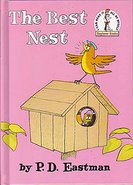 Lamb's Ears is so widely grown and cultivated that it seems to be a native of almost everywhere.
Lamb's Ears is so widely grown and cultivated that it seems to be a native of almost everywhere.I first put the name together with the plant when visiting my friend, Kathy in PA. She taught me about Lamb's Ear and guess what? It grows beautifully in my neck of the woods, too. (S.E.Texas)
Actually, it is native to Northern Turkey, the Southern Caucasus Mountain region and Southern Iran where it grows on rocky hills and scrub areas. In other words, it is a weed. Which is exactly the quality it makes apparent in a rational planned garden. Like many weeds we adopt, it does its own thing. This makes it important to use it the right way in your garden and not try to make it something it isn't.
For instance, it isn't the border plant to end all border plants.
So what are they best for? Pure pleasure. Let them be free and they will spread their seeds and grace the garden with their downy softness and tall graceful purple flower heads. Here a Lamb's Ear and there a Lamb's ear, almost everywhere there will be a Lamb's ear, and you will be glad you let them have their way.
While Lamb's Ears can take partial shade, they can't take excess water, which makes them a poor choice for planting near a lawn.
While Lamb's Ears can take partial shade, they can't take excess water, which makes them a poor choice for planting near a lawn.
Oh, and some of you may wonder why an Herb Company grows Lamb's Ears. While there are a few folkloric references to herbal uses for Lamb's Ears, like to staunch wounds (thus the old name woundwort) and as a washcloth, it has a home here because of its association with the medicinal herb Betony. Both are in the genus Stachys and we tend to collect as many members of any herbal genus as possible. We don't always like all the different species, but Lamb's Ears found a permanent, yet variable, spot in our gardens.







No comments:
Post a Comment